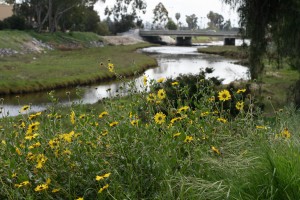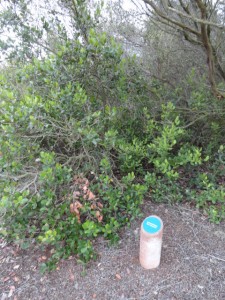
Beautiful California sunflowers are a native plant that is commonly found along the banks of lower Rose Creek.
A native plant is a species that has developed and occur naturally in a given area without being introduced by humans. In North America, native plants are defined as those that were present prior to colonization. The presence of native plants plays a critical role in the Rose Creek Watershed’s ecosystem, because native insects cannot survive without native plants. Respectively, native birds and mammals cannot survive without native insects as a significant food source.
Native plant communities found within the Rose Creek Watershed provide an insight into what animal species could be present. Southern mixed chaparral, chamise chaparral and non-native grassland typically dominate the north-facing slopes. Coastal sage scrub, non-native grassland and native grassland dominate the south-facing slopes. The canyon floors within the upper half of the watershed typically support riparian vegetation such as sycamore and willow trees, while the canyon floors within the lower half support more robust native plant communities such as southern coast live oak forests. These habitats are rarely found close to the coast and are important for a number of migratory and resident birds.

One of Chris Zaleski’s signs that identifies a lemonadeberry plant native to the Rose Creek Watershed.
There are three native plant restoration projects in Rose Canyon Open Space Park that can be accessed by the public. The purpose of these projects is to remove exotic species such as pampas grass and arundo, and plant native species such as coast live oak trees and California buckwheat. A good place to access this area is on the western end of the park from Governor Drive.
Eagle Scout Chris Zaleski completed a project in Marian Bear Memorial Park which provides signs to identify the canyon’s native species. You can visit this area by accessing the trailhead at the end of Limerick Drive at the eastern end of the park.
To learn more about the native plants that are commonly found in the watershed, see page 3-7 of the Rose Creek Watershed Opportunities Assessment.
